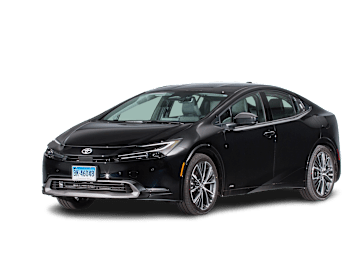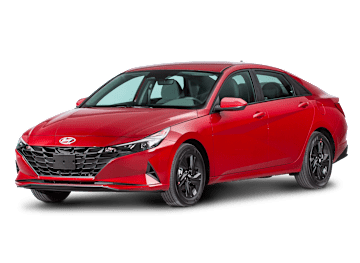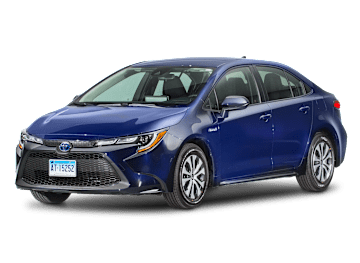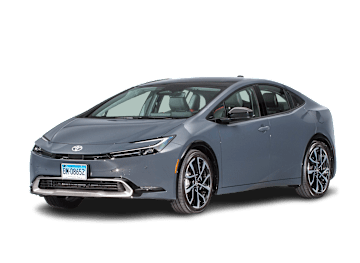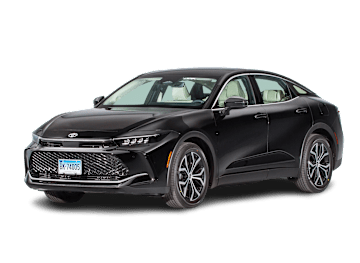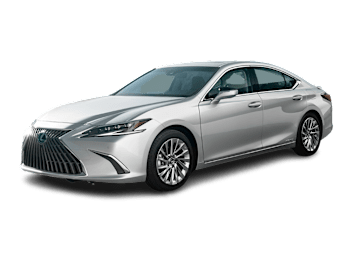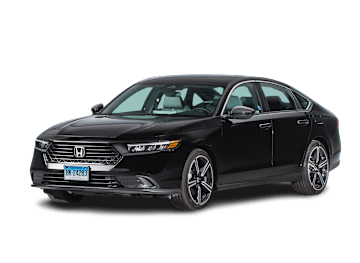Los autos más eficientes en cuanto a consumo de combustible

Estos autos de bajo consumo de combustible son muy económicos
By Jeff S. Bartlett, Jon Linkov
El ahorro de combustible es uno de los factores más importantes a tener en cuenta al comprar un auto nuevo, ya que esto tiene un impacto en los costos semanales. De hecho, los estadounidenses son más propensos a mencionar el ahorro de combustible como el factor que más necesita mejorar en los vehículos que manejan con frecuencia, según una encuesta representativa a nivel nacional de 2,191 adultos estadounidenses realizada en el verano de 2024 por Consumer Reports.
Muchos de los coches que se venden hoy en día ofrecen un ahorro de combustible asombroso, especialmente en comparación con el auto que puedes estar entregando como cambio por uno nuevo. Pero el rendimiento puede variar ampliamente, incluso entre los híbridos. A continuación, destacamos los 10 automóviles más eficientes en cuanto a consumo de combustible según los resultados generales de las pruebas de ahorro de combustible de Consumer Reports.
La medición del ahorro de combustible es una de las más de 50 pruebas que realizamos en cada automóvil que compramos. Nuestras cifras de ahorro de combustible se derivan de un medidor de flujo de precisión y se redondean a la milla por galón más cercana. Los resultados generales de millaje de CR se calculan en función de porcentajes iguales de conducción en ciudad y carretera.
Esta lista comienza con el auto más eficiente y no incluye vehículos eléctricos. Los 10 autos son híbridos e híbridos enchufables que lograron al menos 40 mpg en general en las pruebas de Consumer Reports. Cada uno de los modelos destacados tiene nuestra designación Green Choice, que destaca a los vehículos con las emisiones más limpias. Si estás buscando un SUV de bajo consumo de combustible, mira el Toyota Corolla Cross Hybrid, el único SUV que logró 40 mpg en general en nuestras pruebas.
Si eres miembro de Consumer Reports, el artículo completo y las calificaciones están disponibles a continuación.
Si aún no te has registrado, haz clic a continuación y conviértete en miembro para acceder a este artículo completo y a todas nuestras calificaciones y reseñas exclusivas para cada vehículo que compramos y probamos.
While the current Prius has sleeker looks, more power, and sharper handling than its predecessor, it retains its superb fuel economy. We measured 51 mpg with the XLE all-wheel-drive version we tested; front-drive models are even more sparing with fuel. The car can propel itself on electric power alone at low speeds in light throttle situations up to about 25 mph. Although it delivers much quicker acceleration than the previous Prius, the gas engine is very noisy when it kicks on. Handling is sharper than before, making the car fairly nimble, but the ride is firmer, especially with the large 19-inch wheels and tires most trims now come with. The low stance, swoopy styling, and raked windshield compromise access, visibility, rear-seat space, and cargo room.
The Elantra is one of the better small sedans. It has a sleek and easy-to-use infotainment system, a well-tuned transmission, and a relatively roomy interior for the class, plus it gets impressive fuel economy. The hybrid version is the best choice, not only for its superb 48 mpg overall but also for its slightly smoother ride and sharper handling, thanks to an independent rear suspension setup. The standard engine is a 147-hp four-cylinder teamed with a continuously variable transmission, which together give quick-for-the-segment acceleration and a commendable 33 mpg overall. Handling is nimble, but the ride is too firm and the engine gets noisy. Front-seat comfort isn’t great unless buyers get the pricier Limited trim with its power operation and adjustable lumbar, and the car’s low stance makes access awkward.
The Corolla sedan is fuel-efficient and sensible. A more powerful 169-hp, 2.0-liter four-cylinder engine, once exclusive to the higher trims and the hatchback, is now standard for all nonhybrid models and gets 36 mpg overall. The hybrid version is a sensible choice, with its incredible 48 mpg overall, although the continuously variable transmission amplifies engine noise. All-wheel drive is available. It also gets Toyota’s latest infotainment system. The Corolla’s handling agility is among the better in the compact-car class, as are ride comfort and cabin quietness. BSW and RCTW are optional.
The Camry now comes only as a four-cylinder hybrid and is available with either front- or all-wheel drive. In our tests of a FWD version, we got an impressive 48 mpg overall. The electric drive can propel the car at low speeds if you’re gentle with the accelerator pedal, which keeps the cabin quiet. Higher power demands, however, elicit pronounced noise from the 2.5-liter gas engine. The ride in the SE model we tested is firm and composed yet still comfortable. Handling is responsive and very secure, even when pushed to its limits around our track. The cabin is reasonably roomy, but the rear seat isn’t the most generous in the class, and the car’s low stance makes it slightly difficult to get in and out. The infotainment system is relatively easy to use.
The Niro is a sensible, economical model that rivals most small SUVs, although it comes only with FWD. Handling and braking have been improved over the last version, and the ride is mostly comfortable, but road noise is very noticeable. The controls are relatively intuitive, other than the split-use panel for the audio and climate systems. Rear three-quarter visibility is hurt by the lack of a third side window. The hybrid achieved an excellent 45 mpg overall, a 2-mpg improvement over the first generation. The plug-in hybrid electric vehicle (PHEV) version splits the difference between the standard model and the Niro EV. The PHEV has an EPA-estimated electric driving range of 33 miles, after which it transitions to regular hybrid operation and gets 47 mpg in our tests. It takes just 5.5 hours to recharge the 11.1-kWh battery using a 120-volt household outlet.
The Sonata’s recent freshening brought a wide display screen, which combines the instrument panel and infotainment touchscreen into one panel. It also includes a column-mounted twist-action gear selector instead of the former model’s flush buttons. Ride comfort improved as well. The standard 2.5-liter four-cylinder coupled to an eight-speed automatic provides unobtrusive, linear power and 31 mpg overall in our tests. It’s available with all-wheel drive. We also like the sedan’s responsive and secure handling. The hybrid returned an excellent 44 mpg overall in our tests, but we found that its six-speed automatic has some rough shifts. Rear-seat room is decent, although the low stance compromises access.
The Prius Plug-in Hybrid is the Prius Prime renamed for 2025. It shares the same low-slung design as the regular Prius, but it adds a larger lithium-ion battery that can be plugged in for an electric-only range between 39 and 44 miles, depending on trim, impressive for a plug-in hybrid electric vehicle. Unlike a pure EV, it also has a 2.0-liter gas engine. Once the battery is depleted, the Prius Plug-in Hybrid acts like a regular hybrid. It managed 43 mpg with our tested XSE trim. It takes about 10 hours to charge the battery on a standard 120-volt outlet or about 4 hours on a 240-volt EV charger. The PHEV isn’t available with all-wheel drive. In most other ways it’s very similar to the regular Prius, with responsive handling, a firm ride, a noisy engine, awkward access, and limited visibility. Its hatchback design adds versatility.
The Crown comes exclusively as a hybrid with all-wheel drive, and passengers sit higher off the ground than in most cars, which makes getting into and out easier. Most versions have a 236-hp, four-cylinder with electric drive paired with an electronic continuously variable transmission, which got 42 mpg overall in our tests. The top Platinum trim, which uses a 340-hp, turbo four-cylinder hybrid paired with a six-speed automatic, delivers a more pleasant driving experience. We found the Crown’s ride and handling decent but unremarkable, and some controls, including the gear selector, are fussy. Both the front and rear seats are comfortable, although rear-seat headroom will be tight for taller passengers. Despite its sleek hatchback looks, the Crown features a regular trunk, albeit with a hard-to-find release button.
This comfortable and refined sedan has a quiet, plush, and well-made interior. The optional V6 is mated to an eight-speed automatic, and the combination has prompt throttle response and a linear power delivery. We attained 25 mpg overall in our test, while the ES hybrid’s powertrain returned 42 mpg. The base four-cylinder ES 250 comes standard with AWD. The ES absorbs bumps very well, and the body stays stable. Handling is sound and secure but not sporty. The cabin is quiet and luxurious, the front seats are very comfortable, and the infotainment system is easy to use.
The Accord remains a sensible midsized sedan that’s roomy, user-friendly, and fuel-efficient. The standard 1.5-liter turbo-four and CVT work smoothly and deliver adequate power. This powertrain managed 32 mpg overall in our testing. But it’s the hybrid version that’s the real standout here, with its more lively power delivery and excellent 40 mpg overall. The ride is comfortable, and handling is responsive but not sporty. Rear-seat room is generous, and the trunk is large with a wide opening that makes the space easy to access. Controls are very easy to use in all the trim levels. BSW and RCTW aren’t available on the base LX but are standard on all hybrid models.
Consumer Reports is an independent, nonprofit organization that works side by side with consumers to create a fairer, safer, and healthier world. CR does not endorse products or services, and does not accept advertising. Copyright © 2025, Consumer Reports, Inc.

